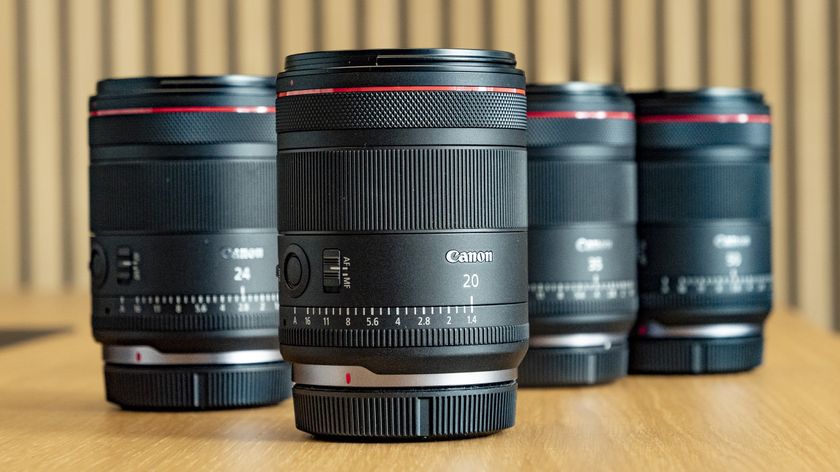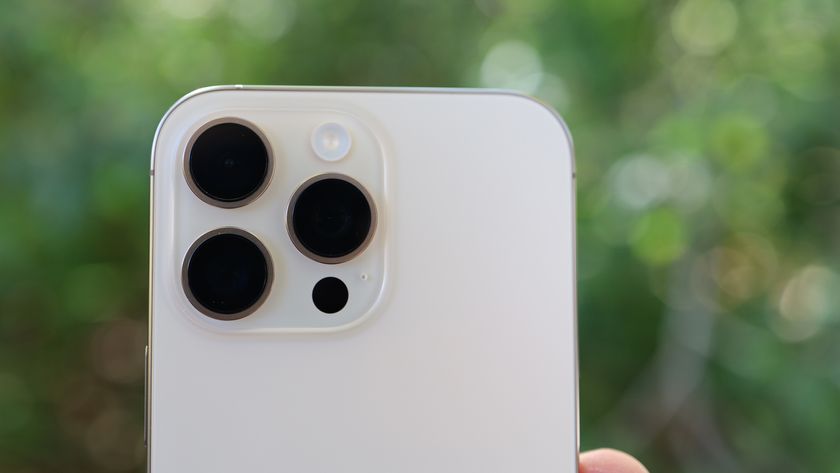The best wide-angle lenses for Canon DSLRs in October 2019
Get the more in your pictures with these super-wide optics
If you have a full-frame Canon DSLR like the 5D Mark IV, then you'll need a full-frame super-wide-angle lens – you can't use a smaller lens designed for its APS-C cameras. Nikon full-frame DSLRs can use smaller format lenses in a 'crop' mode, but that's not possible with Canons.
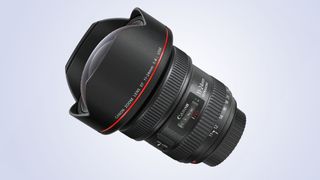
1. Canon EF 11-24mm f/4L USM
Specifications
Reasons to buy
Reasons to avoid
Canon has some superb full-frame ultra-wide-angle zoom lenses, but until recently the only option shorter than 16mm was the EF 8-15mm f/4 – but that's a fisheye lens. The extra 5mm advantage of the 11-24mm lens may not sound very much, but even very small changes in focal length have a huge impact with ultra-wide-angle optics – every millimetre delivers a visibly wider angle of view.
Although it may have a short focal length, the EF 11-24mm f/4L USM is a pretty substantial lens, with a bulbous front element shielded by a built-in petal-style lens hood. A lens cap pushes over the hood to protect the precious glass in transport – and you will want to protect it because the optical performance is excellent.
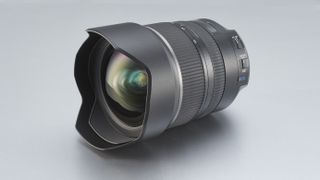
2. Tamron 15-30mm f/2.8 DI VC USD for Canon
Specifications
Reasons to buy
Reasons to avoid
This Tamron lens doesn't go quite as wide as the Canon 11-24mm, but it's still wider than most. Tamron has developed a line of 'fast' zoom lenses that have a constant, wide f/2.8 aperture, complete with optical image stabilisation or VC (Vibration Compensation), and this 15-30mm takes the lineup into super-wide-angle territory, continuing the themes of impressive build quality, weather-sealed design, ring-type ultrasonic autofocus and image stabilisation.
It's a big lens, but it feels well balanced on Canon full frame bodies from the 6D to the 1D X and handling is excellent. Sharpness is exemplary from the centre to the extreme edges of images, throughout the zoom range. Colour fringing is controlled well and the VC (Vibration Compensation) gave a four-stop benefit in our tests.
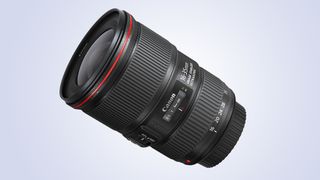
3. Canon EF 16-35mm f/4L IS USM
Specifications
Reasons to buy
Reasons to avoid
On the face of it, the smaller maximum aperture of this lens compared to the 16-35mm f/2.8 version (below) might make it seem less desirable, but the build, weather sealing and handling are just as good and what this lens loses in the 'speed' of its widest aperture, it makes up for with the addition of a four-stop image stabiliser.
Centre-sharpness is fabulous throughout the zoom range, even at the widest f/4 aperture. Sharpness is also well maintained away from the centre but it falls off towards the edges marginally more than in the Tamron 15-30mm lens.
There's very little colour fringing and overall performance is excellent, making this lens better value than the Canon 16-35mm f/2.8.
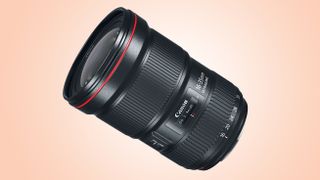
4. Canon EF 16-35mm f/2.8L III USM
Specifications
Reasons to buy
Reasons to avoid
Like other L-series Canon lenses in Canon's lineup, the 16-35mm f/2.8 is robust and features weather seals. Its ring-type ultrasonic autofocus is fast and quiet, and the zoom and focus rings are silky-smooth in operation.
This latest version is optically a lot better than the Mark II version, delivering excellent sharpness across the whole frame, along with superb contrast, even when shooting wide-open at f/2.8.
However, sharpness and contrast aren’t significantly improved over the EF 16-35mm f/4L IS USM, and that lens also features image stabilisation.
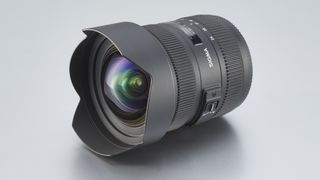
5. Sigma 12-24mm f/4.5-5.6 DG HSM II for Canon
Specifications
Reasons to buy
Reasons to avoid
This is like the full frame equivalent of the APS-C format Sigma 8-16mm. With a 122-degree viewing angle at its shortest focal length, the maximum viewing angle is wider than anything else on the market, bar the Canon 11-24mm.
This lens offers ring-type ultrasonic autofocus and delivers excellent center sharpness throughout the zoom range, though this does drop off at the extreme corners of the frame when using wide apertures at very short focal lengths.
Barrel distortion is quite well controlled though – this is often quite strong in super-wide-angle lenses.
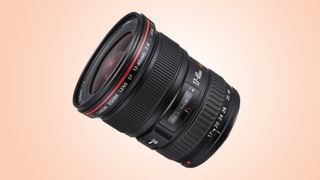
6. Canon EF 17-40mm f/4L USM
Specifications
Reasons to buy
Reasons to avoid
This is one of Canon Canon's L-series (Luxury) lenses and includes weather seals, with a rubber ring around the mounting plate to guard against dust and moisture entering the camera. It's not the widest super-wide-angle lens in the Canon range, but from a money-saving point of view, the 17-40mm is only just over half the price of the Canon 16-35mm.
Autofocus is very rapid and the manual focus ring is smooth and precise, both in manual focusing mode and in full-time override of autofocus. The action of the zoom ring is similarly smooth.
There is no optical stabiliser in this lens, and while the sharpness is mostly impressive, there's some vignetting (darkening of image corners) when combining the shortest focal length with the widest available aperture – but it's no worse than average.
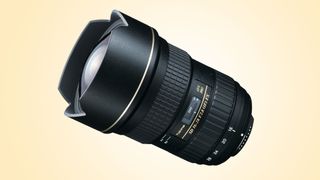
7. Tokina AT-X 16-28mm f/2.8 PRO FX for Canon
Specifications
Reasons to buy
Reasons to avoid
This is a big, heavy lens weighing nearly a kilogram (2lb), due in part to that fast f/2.8 constant aperture. The Tokina employs a 'silent' DC autofocus motor and GMR (Giant Magnetoresistance) module, and the company claims this gives faster, quieter autofocus. It's certainly true compared with some of Tokina's older lenses.
This lens has Tokina's trademark 'one-touch focus clutch' – essentially a push-pull mechanism coupled to the focus ring, for switching between autofocus and manual focus. It's slicker than some because you don't need to switch between AF/M on the camera body or lens.
Handling and image quality are very good, with high levels of centre sharpness and restrained colour fringing, though the corners could be sharper. The built-in hood helps to avoid ghosting but precludes the use of filters.
Whereas the Nikon 10-24mm super-wide lens was launched back in 2009, this lens dates from 2003, preceding even the D70 camera which brought DSLR photography to the masses.
Even relatively ancient lenses can still be extremely good, and you'd certainly have high hopes for this one, given that it's the most expensive DX-format ultra-wide lens on the market. Features include fast, quiet ring-type ultrasonic autofocus and a constant aperture.
Even so, it's a stop slower than the Tokina 11-16mm lens, and the the maximum angle of view is reduced. Considering its high price, performance is disappointing for both sharpness and color fringing.
Taking everything into account, the Nikon looks overpriced compared with independently made competitors, as well as its own 10-24mm stablemate.
Current page: Best wide-angle lens for Canon full-frame DSLRs
Prev Page Best wide-angle lens for Canon APS-C DSLRsGet daily insight, inspiration and deals in your inbox
Sign up for breaking news, reviews, opinion, top tech deals, and more.
